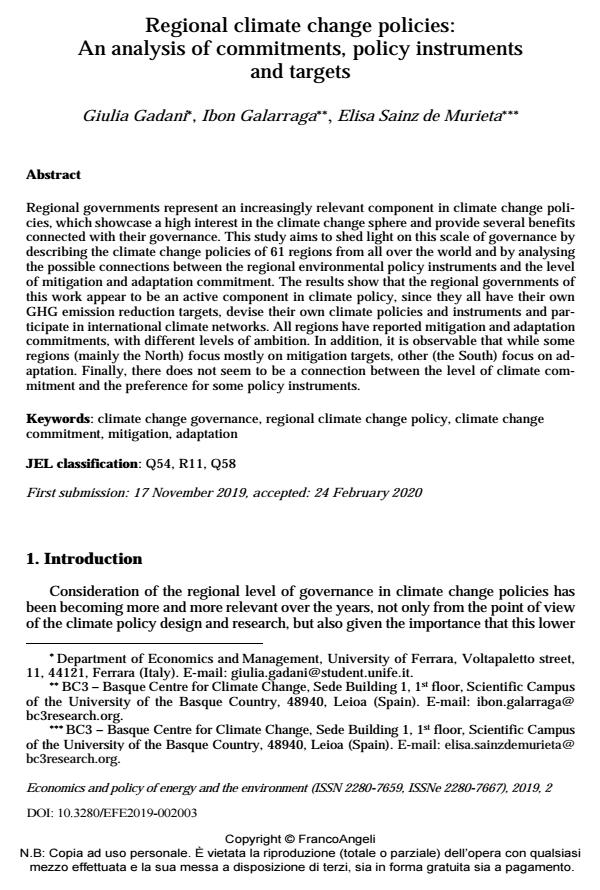Regional climate change policies: An analysis of commitments, policy instruments and targets
Titolo Rivista ECONOMICS AND POLICY OF ENERGY AND THE ENVIRONMENT
Autori/Curatori Giulia Gadani, Ibon Galarraga, Elisa Sainz de Murieta
Anno di pubblicazione 2020 Fascicolo 2019/2
Lingua Inglese Numero pagine 26 P. 49-74 Dimensione file 296 KB
DOI 10.3280/EFE2019-002003
Il DOI è il codice a barre della proprietà intellettuale: per saperne di più
clicca qui
Qui sotto puoi vedere in anteprima la prima pagina di questo articolo.
Se questo articolo ti interessa, lo puoi acquistare (e scaricare in formato pdf) seguendo le facili indicazioni per acquistare il download credit. Acquista Download Credits per scaricare questo Articolo in formato PDF

FrancoAngeli è membro della Publishers International Linking Association, Inc (PILA)associazione indipendente e non profit per facilitare (attraverso i servizi tecnologici implementati da CrossRef.org) l’accesso degli studiosi ai contenuti digitali nelle pubblicazioni professionali e scientifiche
Regional governments represent an increasingly relevant component in climate change policies, which showcase a high interest in the climate change sphere and provide several benefits connected with their governance. This study aims to shed light on this scale of governance by describing the climate change policies of 61 regions from all over the world and by analysing the possible connections between the regional environmental policy instruments and the level of mitigation and adaptation commitment. The results show that the regional governments of this work appear to be an active component in climate policy, since they all have their own GHG emission reduction targets, devise their own climate policies and instruments and participate in international climate networks. All regions have reported mitigation and adaptation commitments, with different levels of ambition. In addition, it is observable that while some regions (mainly the North) focus mostly on mitigation targets, other (the South) focus on adaptation. Finally, there does not seem to be a connection between the level of climate commitment and the preference for some policy instruments.
Parole chiave:Climate change governance, regional climate change policy, climate change commitment, mitigation, adaptation
Jel codes:Q54, R11, Q58
Giulia Gadani, Ibon Galarraga, Elisa Sainz de Murieta, Regional climate change policies: An analysis of commitments, policy instruments and targets in "ECONOMICS AND POLICY OF ENERGY AND THE ENVIRONMENT" 2/2019, pp 49-74, DOI: 10.3280/EFE2019-002003